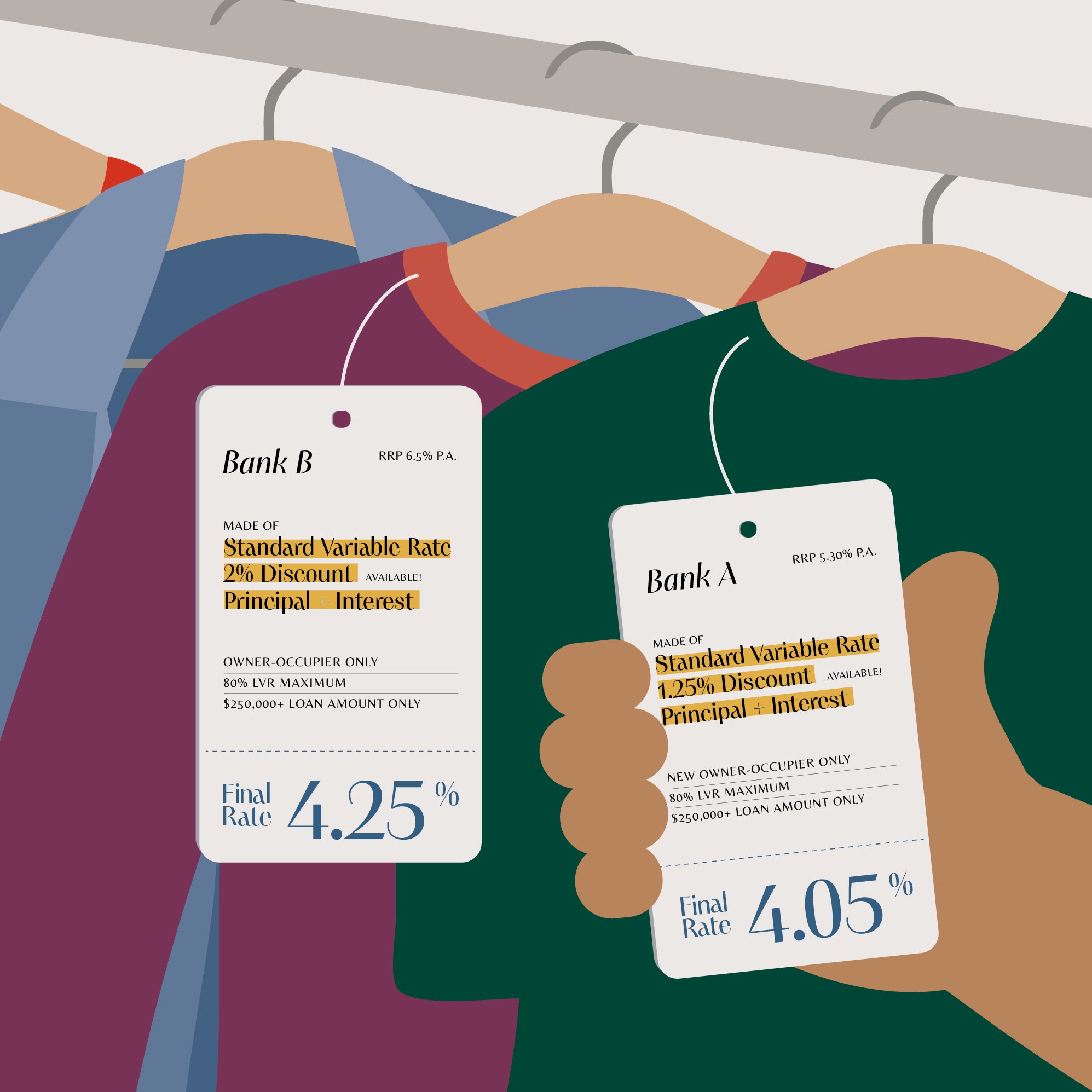The Lowdown On Interest Rate Pricing. Did You Know Interest Rates Are Negotiable?
Interest rates are indeed complex to understand. The reality of their impact, or real drivers beneath them, are not something I myself fully understood until I’d really well and truly entered the property market. The way it works, banks will often advertise the lowest interest rate to captivate an audience, but there is actually always a complex layering of discounts and variables habitually beneath them, that determine the final rate a buyer will pay.
The way we think about it, the interest rate that’s advertised to you, is like the RRP on a clothing tag. But just like on a swing tag on a new item, there’s always a list of inputs built-into the product that will undoubtedly affect the feel or experience of the life of the loan… and even, a variety of hidden discounts.
BY JYH KAO_PUBLISHED ON SEPTEMBER 13, 2022
Like the RRP on a clothing tag, there’s more to the final rate of a home loan than the interest rate.
To start, you’ve got fixed rates and standard variable rates. While fixed rates can be appealing for the initial period, far too many buyers in my experience, either aren’t aware or forget these are always set to switch back to a standard variable interest rate after a set period, often at a higher rate than previous. A fixed loan has its pros and cons and I would recommend seeking advice before deciding to go with a fixed loan. If you have a diverse portfolio, strategically choosing to fix some loans can be a good idea to manage risk.
Fixed loans also usually don’t have offset facilities, redraw potential or unlimited additional repayments that help paint a broader picture of the flex within the effect of your final rate.
Potential ‘discounts’, best deciphered with the help of an experienced mortgage broker, start with the loan type, i.e. will the property be owner-occupied or is it being purchased for an investment purpose? Interestingly, owner-occupier loans will generally have lower rates to them further still as opposed to investment loans.
What also makes a difference is the repayment type. If you’re paying Principal + Interest payments, that poses less risk for the banks, so they’ll generally reward you with a lower rate. Comparatively, if you’re paying Interest only, the rate will usually be a bit higher.
The higher the LVR (Loan to Value Ratio), the higher the rate is going to be also. If you’re borrowing 90-95% of the property’s total value, you’re going to get a higher rate than if your LVR is a lot lower, e.g. 50-60% or less. Where a lower LVR will come with a higher discount yet again.
New borrowers will be offered better deals… and homeowners who’ve been on the same loan structure for a while won’t be being proactively served otherwise… without regular check-ins with a trusted mortgage broker to renegotiate the best for them.
Finally, primarily… there’s the loan amount – if your loan is above $1,000,000 you’ll have available to you a higher discount as well. But these are not things you can necessarily intuitively presume would be the case. Or gather, by simply looking at a loan’s ‘price tag’. You really do need to look under the hood… or much deeper than a loan’s ‘RRP’ or the rate advertised.
Having an experienced mortgage broker help you do that, is exactly how you get ahead.
In some instances, when faced with rate changes, you might not even need to switch banks like you might think you should, you may just need to switch things inside the loan structure with a helping hand.
With all these nuances and hidden extras… it becomes clear, the lowest rate, or generalised chat about them being the focus, is not wise or best. At the end of the day, you should feel supported in that everything when it comes to interest rates is generally negotiable.


